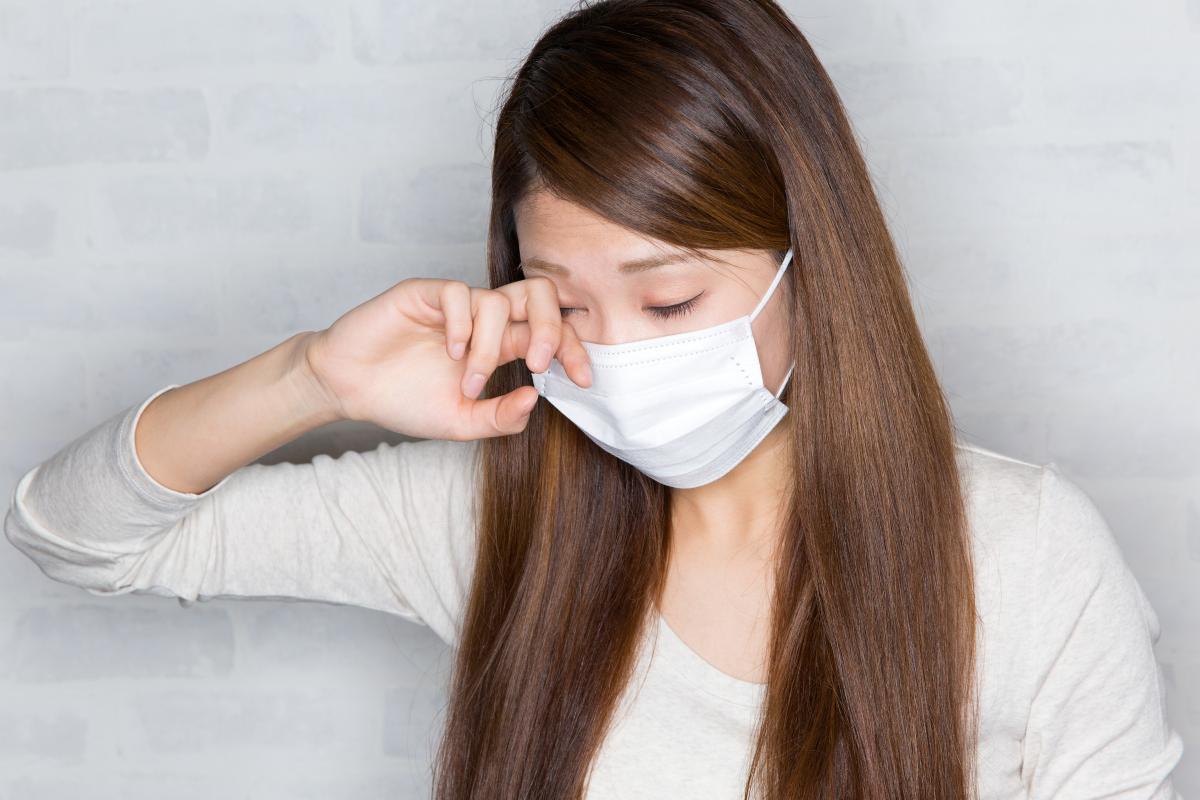- A-
- A+
Your eye health
Dry eye syndrome and the use of face masks
Wearing a mask can cause or worsen dry eye syndrome. Wearing it in accordance with a few tips can limit this risk.
The Covid-19 epidemic, which has been raging around the world since the beginning of 2020, has considerably increased and generalized the use of surgical masks among the population. More and more people are forced to wear masks outdoors, in their work environment, on public transport and in shops, to protect themselves and others and to limit the spread of the virus.
Wearing a mask on a daily basis can cause dry eyes or even aggravate pre-existing dry eyes condition. A poorly positioned mask can explain this phenomenon, which is not inevitable.

What is Dry Eye syndrome?
Dry eyes are caused by a lack of quantity and/or quality of tears. The result is a tear film that does not fully perform its functions of hydration, lubrication and protection of the eye surface.
In addition to the sensation of dry eyes, which alone is not sufficient to diagnose dry eye syndrome, dry eyes cause a number of symptoms:
- tingling, itching, burning;
- a feeling of a foreign body or dust in the eye;
- sensitivity to light, irritating substances or wind;
- difficulty to open the eyelids in the morning;
- difficulty in wearing contact lenses;
- Corneal irritation (keratitis) and eye infections.
Normally, dry eyes are related to ageing, but there are other reasons for dry eyes:
- exposure to irritating substances (tobacco, pollution, chemicals, etc.) and to blue light from screens
- Wearing contact lenses;
- air-conditioned environments;
- a history of eye surgery, especially refractive surgery (to correct myopia, astigmatism and hyperopia);
- certain chronic diseases such as Gougerot-Sjögren's syndrome (an autoimmune disease causing dry eyes and mucous membranes) or lupus (a chronic autoimmune disease).
Wearing a mask: what impact on dry eyes?
In a report published in July 2020, scientists from the Centre for Ocular Research & Education (CORE) at the University of Waterloo in Canada observed that, in parallel with mask use, there was a significant increase in dry eye. This mask-associated dry eye is known as MADE (Mask Associated Dry Eye).
One of the reasons for this is the way in which air is exhaled when wearing a mask (often poorly fitted around the nose). Air tends to exit through the top of the mask, creating an evaporation of tears from the surface of the eye, which increases or causes dry eye. This phenomenon is aggravated by wearing glasses.
At the same time, the widespread use of teleworking, which involves more screen time, is also a possible explanation for the increase in dry eye. Screens emit harsh light and reduce blinking, which is essential for the renewal of the tear film.
Elderly people, contact lens wearers and people who already suffer from dry eye syndrome are more likely than others to suffer from mask-related dry eye. This is also the case for people who work a lot in front of a screen or who work in highly air-conditioned spaces.
What are the solutions to mask-related dry eye?
Wearing a mask remains essential to prevent the spread of the virus that causes Covid-19. The risk of dry eyes should not prevent the mask from being worn whenever necessary.
The treatment of mask-related dry eye is through the administration of artificial tears or tear substitutes. These preservative-free eye drops can be used daily to compensate for a lack of tears or dysfunction of the tear film and to limit irritation of the eye surface.
It is also advisable to wash the eyes regularly with physiological saline solution to eliminate irritating substances, and to take care of the eyelids with suitable products (specific eye care), particularly in the evening before going to bed.
In parallel, a few measures can be implemented:
- Wear your mask correctly, by pinching the top part of the nose or taping it down. Be careful not to obstruct the eye blinking.
- Limit the time spent in polluted or air-conditioned environments.
- When working on a screen, take regular breaks to blink and limit the amount of time spent in front of a screen each day.
- Do not touch your eyes without washing your hands first, especially as transmission of coronavirus can potentially be through the eyes.
- Ensure sufficient humidity in the indoor environment (between 30 and 50%).
In any case, remember to consult your doctor or ophthalmologist as soon as the first signs of dry eye appear, in order to obtain medical advice and a prescription adapted to your needs.
Sources
(1) Ameli, Sécheresse oculaire : définition, symptômes et causes [en ligne]. Disponible sur :
https://www.ameli.fr/assure/sante/themes/secheresse-oculaire/definition-symptomes-causes.
(2) Moshirfar M., West W.B. & Marx D.P., « Face Mask-Associated Ocular Irritation and Dryness », Ophthalmology and Therapy, Tome 9, 15 juillet 2020, pp. 397-400.
(3) Les Cahiers d’Ophtalmologie, Prendre en compte la sécheresse oculaire liée au masque [en ligne]. Disponible sur : https://www.cahiers-ophtalmologie.fr/prendre-en-compte-la-secheresse-oculaire-liee-au-masque.



